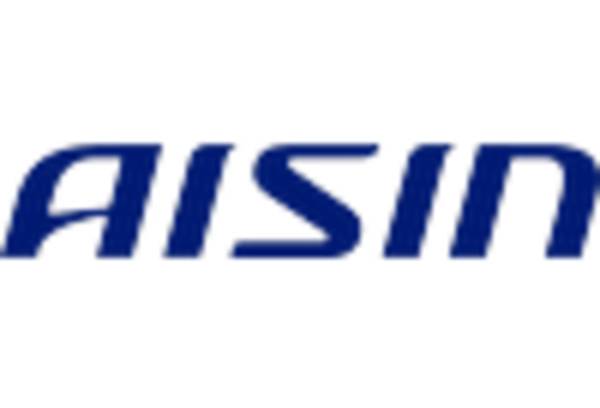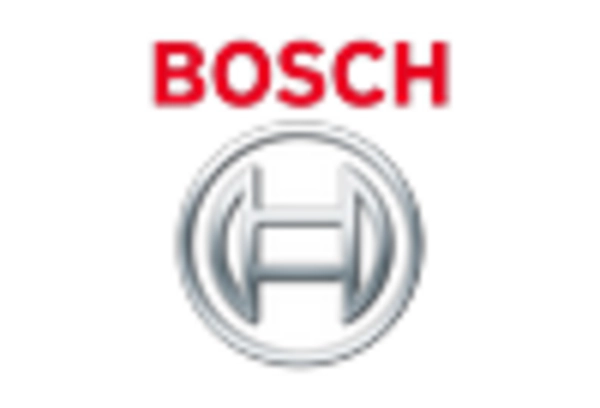Rising Vehicle Production
The automotive industry is witnessing a surge in vehicle production, which directly influences the Automotive Coolant Pump Market. As manufacturers ramp up production to meet consumer demand, the need for efficient cooling systems becomes paramount. In 2025, the production of passenger vehicles is projected to reach approximately 80 million units, indicating a robust growth trajectory. This increase necessitates the integration of advanced coolant pumps to ensure optimal engine performance and longevity. Consequently, the Automotive Coolant Pump Market is likely to experience heightened demand, driven by the need for reliable cooling solutions in newly manufactured vehicles.
Technological Innovations
Technological advancements in automotive cooling systems are driving the evolution of the Automotive Coolant Pump Market. Innovations such as smart coolant pumps, which utilize sensors and electronic controls, are enhancing the efficiency and reliability of cooling systems. These advancements not only improve engine performance but also contribute to fuel efficiency and reduced emissions. The integration of advanced materials and designs is expected to further propel the market, as manufacturers seek to optimize coolant pump performance. As a result, the Automotive Coolant Pump Market is likely to witness a surge in demand for technologically advanced solutions.
Growth of Electric Vehicles
The transition towards electric vehicles (EVs) is reshaping the Automotive Coolant Pump Market. As EV adoption accelerates, the demand for specialized cooling systems tailored for electric drivetrains is increasing. Unlike traditional internal combustion engines, EVs require efficient thermal management to maintain battery performance and longevity. The market for automotive coolant pumps is expected to expand as manufacturers develop innovative solutions to address the unique cooling needs of EVs. By 2025, it is anticipated that EV sales will account for a significant share of the overall automotive market, further propelling the Automotive Coolant Pump Market.
Stringent Emission Regulations
Governments worldwide are implementing stringent emission regulations to combat environmental pollution, which significantly impacts the Automotive Coolant Pump Market. These regulations compel manufacturers to adopt advanced cooling technologies that enhance engine efficiency and reduce emissions. For instance, the introduction of Euro 7 standards is expected to drive innovation in coolant pump designs, promoting the use of electric and variable-speed pumps. As a result, the Automotive Coolant Pump Market is poised for growth, as manufacturers seek to comply with these regulations while improving vehicle performance and sustainability.
Increasing Consumer Demand for Performance
Consumer preferences are shifting towards high-performance vehicles, which is influencing the Automotive Coolant Pump Market. As drivers seek enhanced engine performance, manufacturers are compelled to invest in advanced cooling technologies that can support higher power outputs. This trend is particularly evident in the sports and luxury vehicle segments, where performance is a key selling point. The demand for high-performance coolant pumps is expected to rise as manufacturers strive to meet consumer expectations. Consequently, the Automotive Coolant Pump Market is likely to benefit from this growing emphasis on performance-oriented cooling solutions.


















Leave a Comment